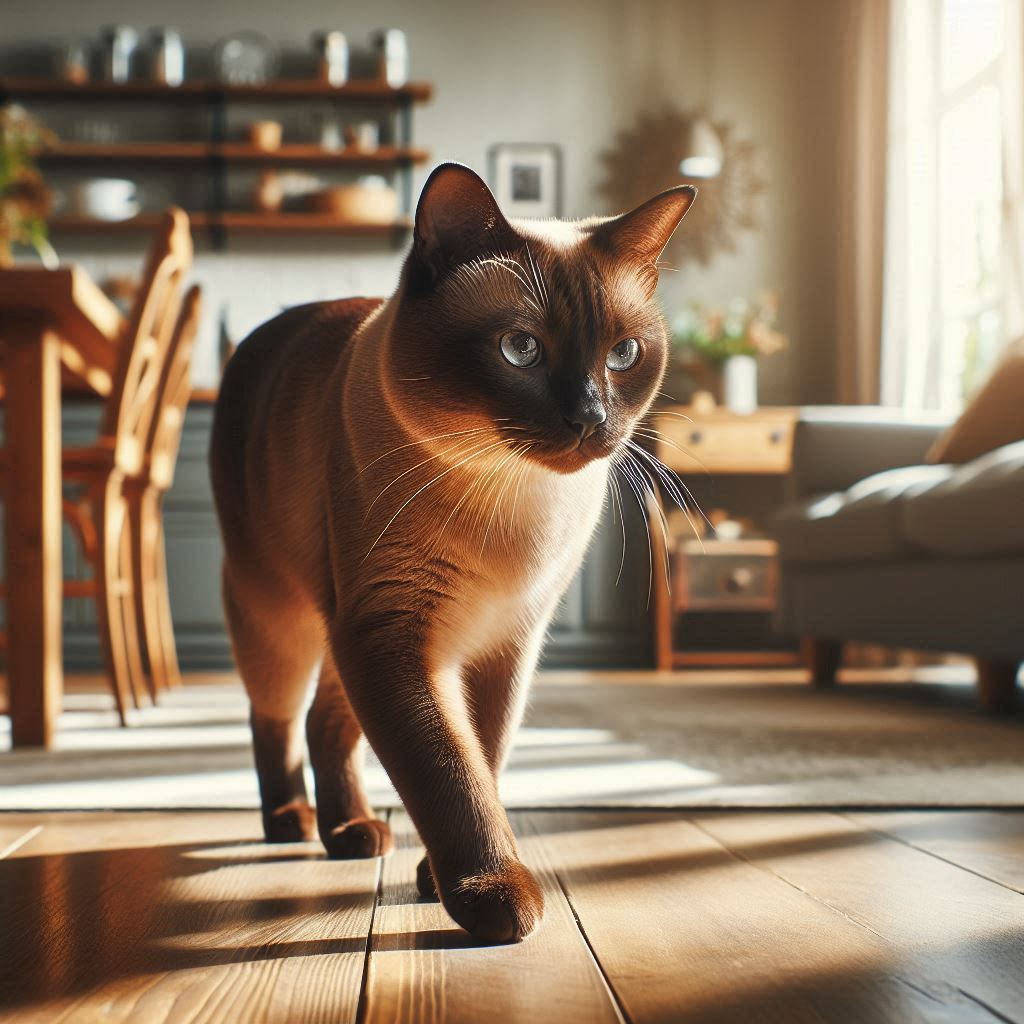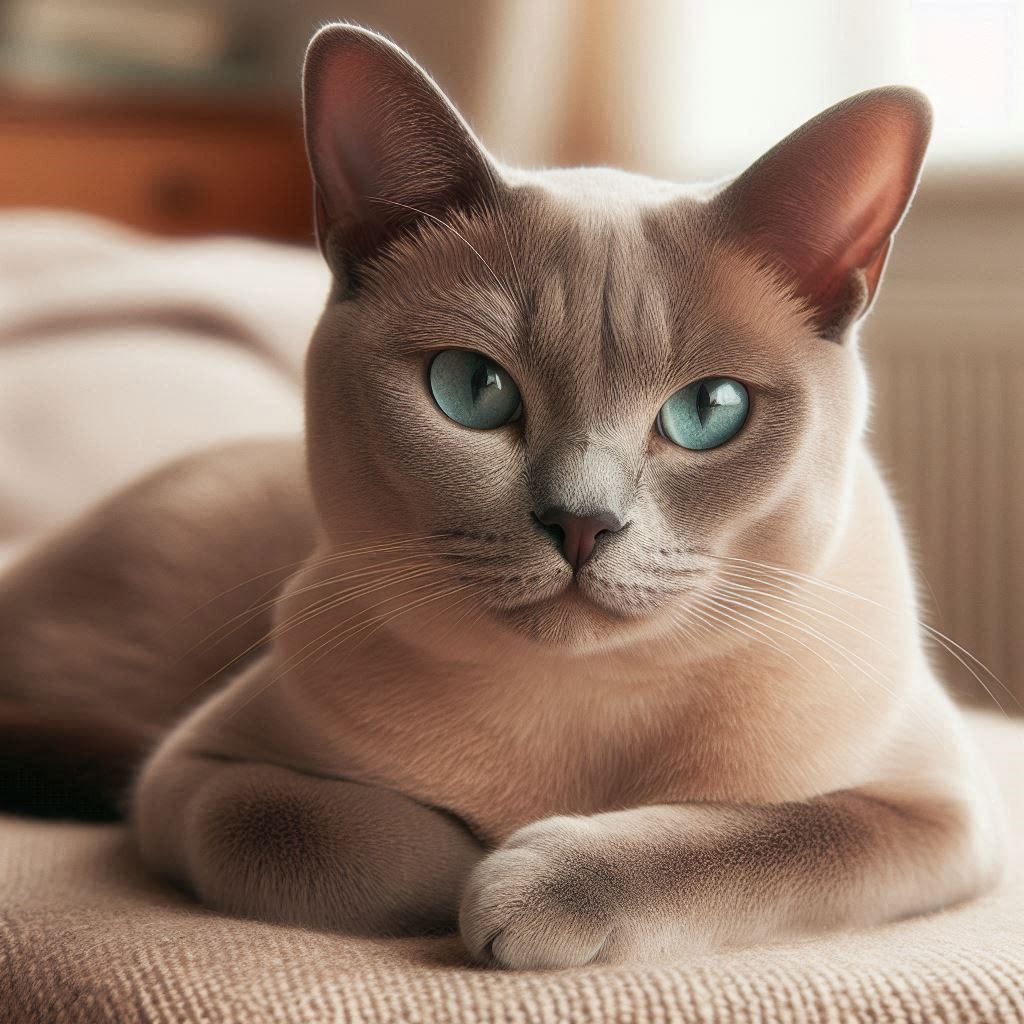The Burmese cat is a breed cherished for its affectionate, playful nature and striking appearance. Known for forming strong bonds with their owners, Burmese cats are social, energetic, and thrive in households where they can be part of the action. These medium-sized cats have a muscular, compact body, a short silky coat, and expressive eyes that exude warmth. If you’re looking for a cat with a dog-like personality, the Burmese may be the perfect addition to your home.
History and Origin of the Burmese Cat
The Burmese cat has its roots in Southeast Asia. The breed was developed from a small, walnut-brown cat named Wong Mau, brought from Burma (modern-day Myanmar) to the United States in 1930 by Dr. Joseph Thompson. Wong Mau was bred with a Siamese, and through selective breeding, the Burmese as we know it today was created. The breed quickly gained popularity in the U.S. and later in the U.K., thanks to its affectionate nature and striking good looks.
Though Wong Mau was the foundation cat for the Burmese breed, it’s believed that cats similar to Burmese had existed in the temples of Burma for centuries. Today, the Burmese is recognized as one of the most affectionate and people-oriented cat breeds.
Physical Characteristics
The Burmese cat has a distinct appearance that sets it apart from other breeds. It is medium in size, with a strong, muscular body and a sleek, short coat.
- Body: Burmese cats are muscular, compact, and sturdy. Despite their relatively small size, they feel surprisingly heavy when picked up, which has led some breeders to describe them as “bricks wrapped in silk.”
- Coat: The coat of a Burmese cat is short, fine, and glossy. It lies close to the body and has a silky texture. While traditionally a rich, sable brown, Burmese cats can also come in other colors like champagne, blue, and platinum. Each color is warm and rich in tone, enhancing their luxurious appearance.
- Eyes: Burmese cats have large, expressive eyes that are round and can range from yellow to gold. Their eyes are one of their most striking features, giving them a gentle, inviting expression.
- Head and Ears: The head of a Burmese cat is rounded with a short muzzle. They have medium-sized ears that are rounded at the tips and set wide apart on their head, adding to their alert yet friendly appearance.
Personality and Temperament
Burmese cats are often described as “people-oriented” because of their deep attachment to their human companions. They are social, affectionate, and love to be involved in family life.
Affectionate and Loyal:
Burmese cats are known for their strong attachment to their owners. They are often compared to dogs due to their loyal, loving nature. These cats crave human companionship and will follow their favorite person from room to room. They enjoy being cuddled and held, making them great lap cats.
Playful and Energetic:
Burmese cats are very playful and energetic. They enjoy interactive games, toys, and activities that engage their natural curiosity and hunting instincts. Even as they age, they maintain a kitten-like sense of fun and mischief.
Social and Friendly:
Burmese cats get along well with other pets and children, making them excellent family pets. They are not aloof or independent like some other breeds but prefer to be in the company of others, whether it’s people or other animals. They thrive in environments where they receive plenty of attention.
Vocal but Soft-Spoken:
While not as vocal as Siamese cats, Burmese cats are still communicative. They tend to have a softer, gentler voice and will “talk” to their owners, especially when seeking attention.

Caring for a Burmese Cat
The Burmese cat is a relatively low-maintenance breed when it comes to grooming. However, like all pets, they require some care to stay healthy and happy.
Grooming
A quick brush or wipe with a damp cloth once a week is usually enough to keep their coat in good condition. They are not heavy shedders, making them a good choice for people who prefer a clean home.
Diet and Exercise
While the Burmese is a relatively laid-back breed, they do enjoy playtime and need regular mental and physical stimulation. Interactive toys, puzzle feeders, and climbing structures are great ways to keep them engaged. Regular play sessions will also help them burn off energy and stay in shape.
Health and Lifespan
Burmese cats are generally healthy, but they can be prone to certain genetic conditions. With proper care, they can enjoy a long and healthy life.
- Average Lifespan: The Burmese cat typically lives 12 to 16 years, though with excellent care, they can live even longer.
- Common Health Issues: Some health concerns that may affect Burmese cats include:
- Craniofacial Defects: Some Burmese cats may inherit craniofacial deformities, though responsible breeders work hard to minimize this risk through careful breeding practices.
- Diabetes Mellitus: Burmese cats have a slightly higher predisposition to diabetes, especially as they age.
- Gingivitis and Dental Issues: Regular dental care is important for Burmese cats to prevent gum disease and tooth problems.
Why Choose a Burmese Cat?
If you’re looking for a cat that’s affectionate, social, and loyal, the Burmese cat is an excellent choice. Their playful and energetic nature makes them wonderful companions for families, singles, and multi-pet households. They enjoy being the center of attention and will reward their owners with love, loyalty, and playful antics. Burmese cats are also relatively low-maintenance, with minimal grooming requirements and a gentle disposition.
Conclusion
The Burmese cat is a loving, loyal, and social breed that thrives on human companionship. Known for their playful, dog-like personalities, these cats make excellent family pets and are wonderful for anyone looking for an affectionate and interactive companion. With their striking appearance, engaging personality, and minimal grooming needs, Burmese cats bring joy and warmth to any household they enter.



